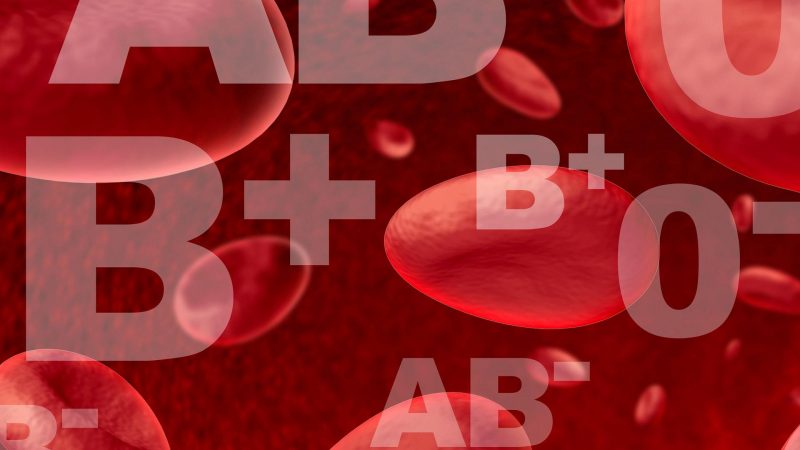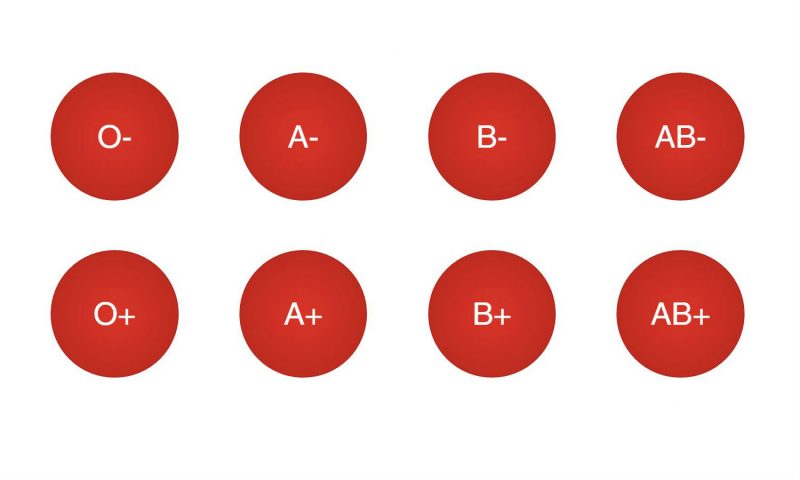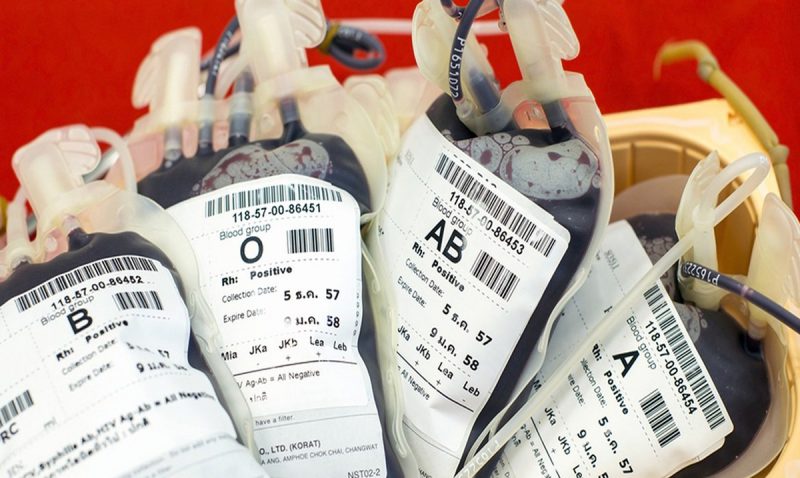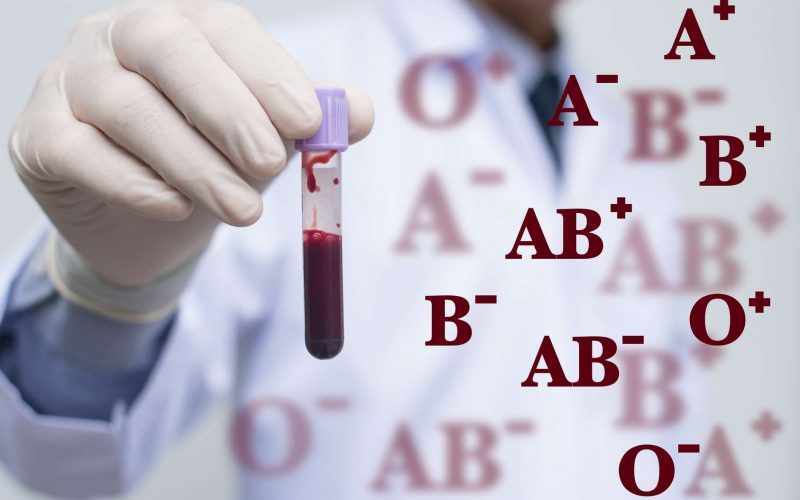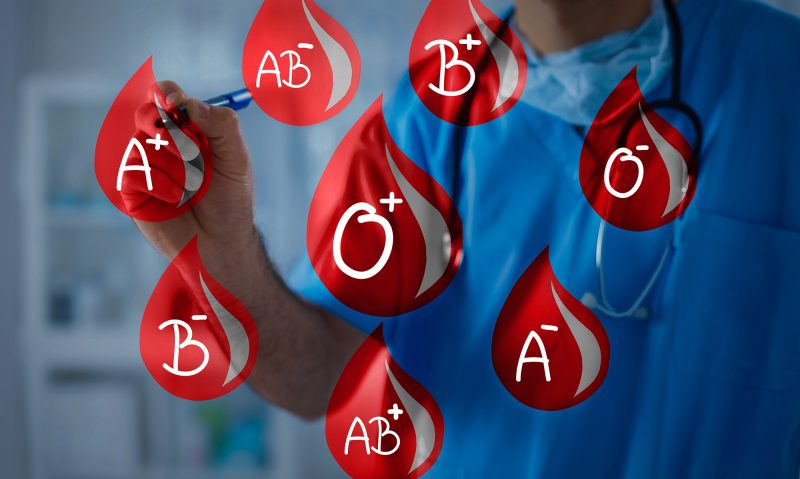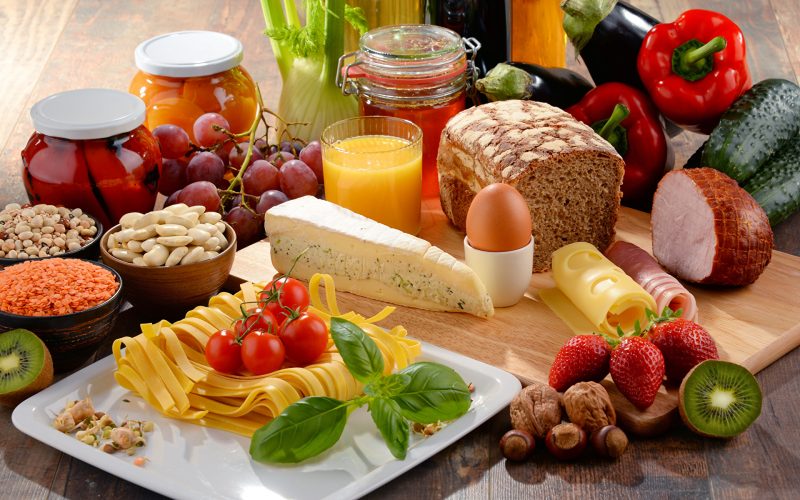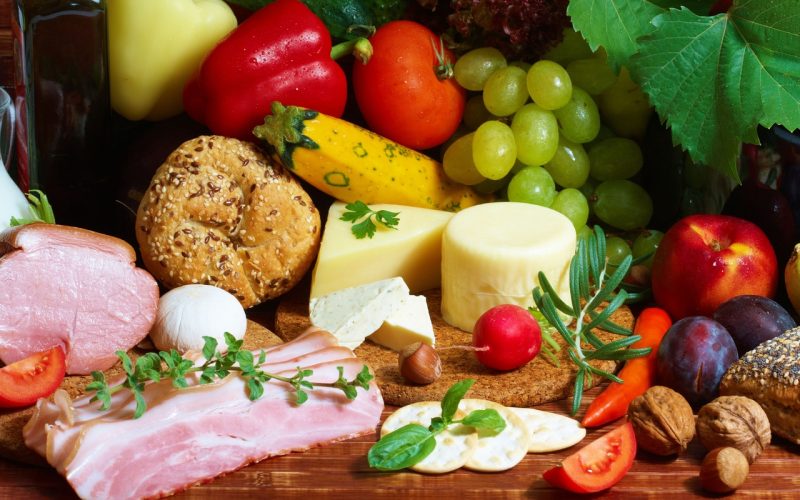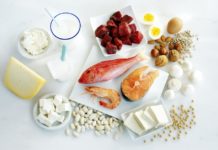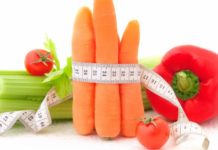Blood type diet is a new direction in the field of nutrition, quite popular among various sectors of society. It was created thanks to many years of research by scientists and nutritionists in America. The founder is Peter D’Adamo, who developed a fundamentally new approach to nutrition.
Material Content:
Blood Type Diet Description
The basis of this system is the theory that during the development of humanity in our body, under the influence of changing living conditions, the biochemical composition also changed, based on which, an individual diet was developed for each blood group.
The human body processes lecithin in different ways, which is the fundamental cellular substance. This element comes with food and serves as an integral part of all body tissues. This diet allows you to most accurately select products based on the lecithin contained in them.
Also, according to the author of the diet, knowing your blood type, you can understand how the ancestors lived and what they ate.
The system he developed includes not only nutritional features, but also various SPA procedures, vitamins and psychological assistance.
Peter D’Adamo divided 4 existing blood types as follows:
- Group 1 is considered the oldest of all. These are the so-called hunters from whom all the other groups evolved. These include approximately 30% of the world's population;
- Group 2 - are farmers, their number is 40% of humanity;
- 3 blood group - nomads with a population of 20%;
- and the rarest blood of the 4th group. This is a mixed type. Its percentage does not exceed 10.
Advantages and disadvantages
The pros include:
- rapid weight loss;
- switching to a more useful menu - low-calorie foods and balanced nutrition;
- some patients have a decrease in blood pressure;
- normalization of biochemical parameters of blood, cholesterol, insulin;
- body cleansing;
- improvement of mental state;
- the inclusion in the diet of each group of a wide range of products.
And now the cons:
- there is no guarantee that the system will really help to lose weight;
- it is necessary to take into account the physiological state of the body;
- in chronic and severe diseases, the diet is contraindicated;
- Constant monitoring and consultation of specialists is mandatory;
- there is a fundamental change in the power system, which not everyone can withstand;
- the effectiveness of the diet is not scientifically proven.
Allowed and Prohibited Products
Each type corresponds to a specific set of products that are especially preferable for its representatives, as well as types of food prohibited for consumption. Consider this classification in the context of three groups.
Complete blood type diet chart
Before deciding on a diet, it is recommended that you study the following information in detail.
Diet for 1 blood group
This group is characterized by persistent immunity and a well-developed digestive system. Along with this, there is a low adaptability to the new nutrition system, as well as a violation of blood coagulability and an increased level of acidity of the stomach. These people are often prone to allergies. In the traditional classification, they are "hunters."
The diet of the group includes high protein foods - primarily meat. Representatives of this type are very mobile and active. To maintain health and tone, they need constant physical activity.
| Allowed Products | Prohibited Products |
|---|---|
| Meat. Servings should be small, meat with high flavoring characteristics. An average roast is recommended, but an oven-baked product is also allowed. You can make a marinade for it based on fruit juices with sourness and the addition of seasonings for beef and lamb. | Dairy products. They are poorly absorbed and worsen well-being. |
| Sea fish. This product helps to avoid inflammation, ensures the proper functioning of the thyroid gland. | Flour and all kinds of cereals. They should be completely removed. The most harmful is wheat. It negatively affects the digestive processes. Therefore, all flour products are prohibited. |
| Vegetables and fruits. The use is available in large quantities, they will enrich the body with vitamins and essential trace elements. | Legumes. They need to be consumed in very small quantities, because people in this group get protein from meat and fish. |
| Dried fruits | Alcohol. Completely exclude high-degree drinks. The exception is red wine, which is useful to drink rarely and in small quantities. |
| Natural green tea. Unlike black, it does not increase the acidity of the stomach, invigorates and refreshes. | Peanuts - completely exclude. |
| Ginger. Useful for the gastrointestinal tract. | Corn is strictly prohibited. |
| Cloves. She fights infections and inflammation. | Strawberries and citrus fruits. |
| Turmeric. The product contains essential oils that protect the gastric mucosa and are useful for normal liver function. It prevents the formation of cancer cells. | Fat meat. |
| Cayenne pepper. It relieves the body of toxins. | Avocados, olives. |
| Liver. Promotes weight loss. | Melon, wild strawberry. |
Before eating or in between, you need to drink water without gas at room temperature. It reduces appetite and cleanses the body.
2 blood groups
This category appeared a little later than the first, as a result of the transition of people to a different way of life, when they began to cultivate the land on their own and grow different cultures.
It is characterized by excellent immune and digestive systems with proper nutrition. Representatives of this type can adapt to any environmental circumstances. But their nervous system is very sensitive. A sharp change in diet is poorly tolerated. They are characterized by low acidity of the stomach.
This group is recommended a vegetarian type of diet in combination with meditative techniques, such as yoga.
| Allowed Products | Prohibited Products |
|---|---|
| Chicken and turkey meat. These are the only types of meat that are allowed to be consumed, but not often - once or twice a week. | Fat meat. It should be completely excluded, because it is difficult for the stomach to digest animal protein. Refers to poorly absorbed elements and contributes to the accumulation of fat mass. |
| Fish and soy products. This is the main source of protein in this case. | Limit the intake of natural milk and other dairy products. Instead of fresh cottage cheese or sour cream, it is better to eat yogurt or drink kefir. |
| Legumes. They include protein of plant origin, which is very well absorbed by people with this blood group. | Cereal crops. Reduce consumption or completely remove cereals, baked goods and cereals. |
| Vegetables and fruits. They can be consumed in any form and quantity. | Corn, tomatoes - completely exclude. |
| Nuts and seeds. Great for a bite to eat. You can eat at least every day, without limiting yourself. Useful for the heart and blood vessels. | Bananas - completely exclude. |
| Broccoli, spinach, squash. They contain a lot of vitamin A. Such products are well and quickly absorbed. | Eggplant, potatoes - completely exclude. |
| Green tea. An invigorating and refreshing drink that strengthens the immune system. | White cabbage. |
The basis of the diet are vegetable and fruit fruits. Due to the low acidity of the stomach, it is worthwhile to include supplements with polysaccharides or seaweed.
3 blood groups
Over time, people began to conquer new lands, and as a result of a partial transition to a nomadic way of life, a third blood group appeared. Part of humanity began to travel the world. Along with this, needs and diet have changed. From here this category of people got its name “nomads”.
Representatives of this type have strong immunity while observing a diet, easily adapt to changing environmental conditions and a new diet. They have a strong nervous system.
Among other things, this group has the most diverse menu in connection with the resettlement in different territories. They can eat almost any kind of food.
The author recommends playing sports to improve the body.
It is believed that in the third group there is no increase or decrease in the acidity of the stomach, unlike the first and second. They can easily assimilate foods with different structures. But you can not abuse opportunities so that toxins do not accumulate and do not cause problems with the digestive system.
| Allowed Products | Prohibited Products |
|---|---|
| Meat. Fresh farm meat in small portions is preferred. It gives a lot of energy. | Pork, poultry. |
| Fatty fish. It improves metabolism and is an anti-inflammatory agent. | Crustaceans, caviar and eel, algae. |
| Milk products. | Pumpkin, potato, tomatoes. |
| Spice. Parsley, ginger and peppermint favorably affect the muscles of the stomach and improve enzymatic processes. They are auxiliary in losing weight. | Pomegranate, persimmon, peanuts. |
This group rarely suffers from excess weight. There are no specific prohibitions or recommendations. You can eat almost everything except chicken, tomatoes, peanuts and buckwheat. The main advice is to eat in small portions.
Alcohol should be removed for all three groups. Even if it seems that the body does not react in any way to its use, this is self-deception.There is a risk of heart disease.
If the difference in nutrition with different Rh factor
It has long been proven that the Rh factor has no effect on the body getting nutrients from food. For example, a blood group 2 diet is positive and a blood group 1 diet is negative only by number. That is why people with negative Rhesus, belonging to one of groups I, II, III and IV, have a similar diet with owners of positive Rhesus.
Blood Type Diet - Weekly Menu
An example of the first blood group can be an approximate diet.
Monday
Breakfast:
- buckwheat with vegetable milk (soy or rice);
- tofu slice;
- tea with rose hips.
Dinner:
- stew lean meat (you can rabbit);
- salad of carrots and fresh apples.
Afternoon snack:
- a handful of dried fruits.
Dinner:
- baked cod fillet;
- fresh cucumber.
Tuesday
Breakfast:
- boiled egg;
- green tea.
Dinner:
- beef with vegetables;
- spinach.
Snack:
- 50 g of nuts.
Dinner
- boiled mackerel;
- seasonal vegetable salad.
Wednesday
Breakfast:
- barley porridge in soy milk;
- tea.
Dinner:
- boiled veal;
- salad of beets and pumpkin seeds.
Snack:
- fresh seasonal fruit.
Dinner:
- steamed pollock fillet;
- a few slices of potatoes.
Thursday
Breakfast:
- barley porridge;
- soft-boiled egg;
- tea from herbs.
Dinner:
- lamb with white beans;
- salad of available vegetables;
- natural juice.
Snack:
- sea kale.
Dinner:
- baked trout;
- several boiled potatoes.
Friday
Breakfast:
- pumpkin porridge;
- half an orange;
- green tea.
Dinner:
- baked turkey;
- vegetable stew.
Snack:
- nuts or dried fruits.
Dinner:
- smoked mackerel;
- stew of seasonal vegetables.
Saturday
Breakfast:
- omelette;
- any seasonal fruit.
Dinner:
- stewed chicken liver with sour cream;
- tomato salad with cucumbers.
Snack:
- a glass of juice (tomato or orange).
Dinner:
- slightly salted herring;
- salad.
Sunday
Breakfast:
- a pair of boiled eggs;
- tofu slice;
- tea on herbs.
Dinner:
- turkey or beef cutlets;
- zucchini puree.
Afternoon snack:
- Garnet.
Dinner:
- cod with vegetables;
- stewed beets (prunes can be added).
Sample menu for 10 days
The diet was compiled using the second blood group as an example.
Day 1
Breakfast:
- buckwheat with kefir;
- rye bread;
- tea with herbs.
Dinner:
- Salmon steak;
- squash puree;
- salted cucumbers.
Afternoon snack:
- pumpkin seeds.
Dinner:
- carp fillet;
- salad with asparagus and green peas (carrots can be added if desired).
Day 2
Breakfast:
- Fried eggs
- herbal tea;
- orange.
Dinner:
- boiled chicken fillet;
- lentil puree;
- greenery.
Afternoon snack:
- an Apple.
Dinner:
- cod fillet;
- sea cabbage and onion salad.
Day 3
Breakfast:
- buckwheat porridge in goat milk;
- soya cheese.
Dinner:
- baked turkey;
- pumpkin puree;
- seasonal vegetable salad.
Snack:
- berries or nuts.
Dinner:
- baked pollock;
- spinach;
- pepper and zucchini stew.
Day 4
Breakfast:
- barley porridge with dried fruits;
- an Apple;
- green tea.
Dinner:
- mushroom soup.
Snack:
- pineapple or nuts.
Dinner:
- steamed trout with vegetables;
- green pea;
- salad of sauerkraut and apples.
Day 5
Breakfast:
- natural yogurt with berries.
Dinner:
- turkey fillet with prunes;
- buckwheat side dish;
- fresh seasonal vegetable salad.
Snack:
- pumpkin seeds.
Dinner:
- steamed pike perch fillet;
- boiled beans;
- spinach salad.
Day 6
Breakfast:
- Fried eggs
- rice bread;
- a glass of pineapple juice.
Dinner:
- perch fillet;
- carrot and apple salad without dressing.
Snack:
- any fruit.
Dinner:
- steamed trout;
- radish salad with herbs and sour cream.
Day 7
Breakfast:
- fruit jelly;
- soy cheese;
- bread rolls (optional).
Dinner:
- boiled chicken meat;
- bean puree;
- grated carrots.
Snack:
- pear or apple.
Dinner:
- seafood platter;
- soaked vegetables;
- bread with cream cheese.
Day 8
Breakfast:
- omelet without milk;
- grapefruit;
- green tea.
Dinner:
- mackerel stewed with vegetables.
Snack:
- a handful of walnuts.
Dinner:
- carp fillet;
- sea kale.
Day 9
Breakfast:
- boiled buckwheat:
- a handful of wild berries (fresh or frozen).
Dinner:
- braised chicken fillet;
- vegetable stew;
- any fresh greens.
Snack:
- a handful of hazelnuts.
Dinner:
- salmon goulash;
- cucumber and green onion salad.
Day 10
Breakfast:
- 2 boiled eggs;
- rye bread;
- berry jelly.
Dinner:
- mackerel with asparagus;
- fig.
Snack:
- apple or pear.
Dinner:
- turkey fillet;
- salad with green peas and leafy greens.
Contraindications
A blood group diet should not be followed by nursing mothers and pregnant women. Also, this food intake scheme is contraindicated for people with diseases of the cardiovascular system and genitourinary organs.
Each power system has pros and cons. If we consider the whole blood diet, then this is a good option for those who like to experiment with different approaches to healing the body. Opinions about her are very different. However, to this day, the diet remains very popular. If you decide to try eating on a blood type, you should first seek the advice of a specialist in order to avoid problems.



